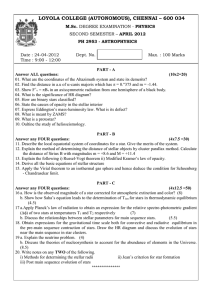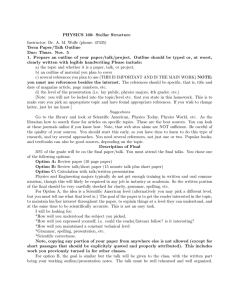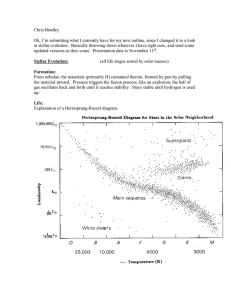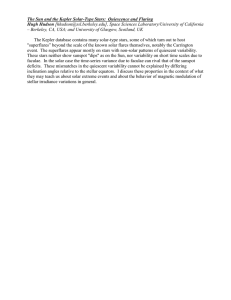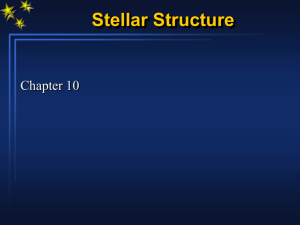Comparing Earth, Sun and Jupiter
advertisement
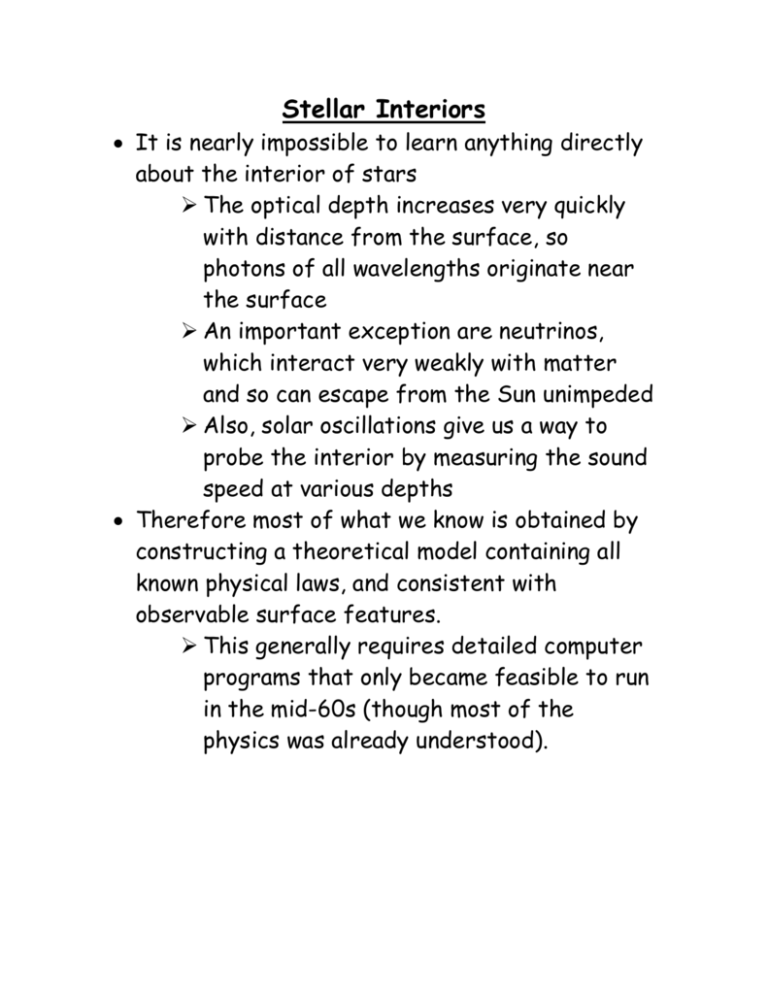
Stellar Interiors It is nearly impossible to learn anything directly about the interior of stars The optical depth increases very quickly with distance from the surface, so photons of all wavelengths originate near the surface An important exception are neutrinos, which interact very weakly with matter and so can escape from the Sun unimpeded Also, solar oscillations give us a way to probe the interior by measuring the sound speed at various depths Therefore most of what we know is obtained by constructing a theoretical model containing all known physical laws, and consistent with observable surface features. This generally requires detailed computer programs that only became feasible to run in the mid-60s (though most of the physics was already understood). Equilibrium The majority of stars are in a near-equilibrium state, in that their structure changes only slowly over many millions of years. Exceptions are very early and very late stages of evolution, where changes happen more rapidly Explosive events (such as supernovae) occur on very short timescales Some stars are also unstable to pulsation and their size varies in a regular way The Solar luminosity is 3.8x1026 J/s This is enough energy to melt a block of ice 1AUx1kmx1km in only 0.1 s. Clearly the Sun is losing energy at an enormous rate; since it does not have an infinite reserve, its structure must be changing with time. Stellar Structure Equations The equation of mass conservation relates the mass Mr enclosed within radius r, dM 2 r 4 r to the density at that radius, dr (r). The equation of hydrostatic equilibrium describes the balance between the pressure gradient (dP/dr) and the dP GM r gravitational force required to dr r2 keep the star in equilibrium: The ideal gas law can be used in most cases to relate the temperature (T), pressure (P) and number density (n): or, defining the mean m kT molecular mass P P nkT mH mH

